Turns out there is a cure for the summertime blues…blue flowers! In the heat of summer, blue-blooming plants bring a cool, calming vibe to any garden. Whether you’re designing a soft cottage garden, a pollinator paradise, or a bold tropical nook, adding blue-blooming plants will make your landscape hum with beauty—and beneficial bees! Here are 5 of our favorite true blue bloomers for summer and beyond.
1. Blue Pea Vine (Clitoria ternatea)
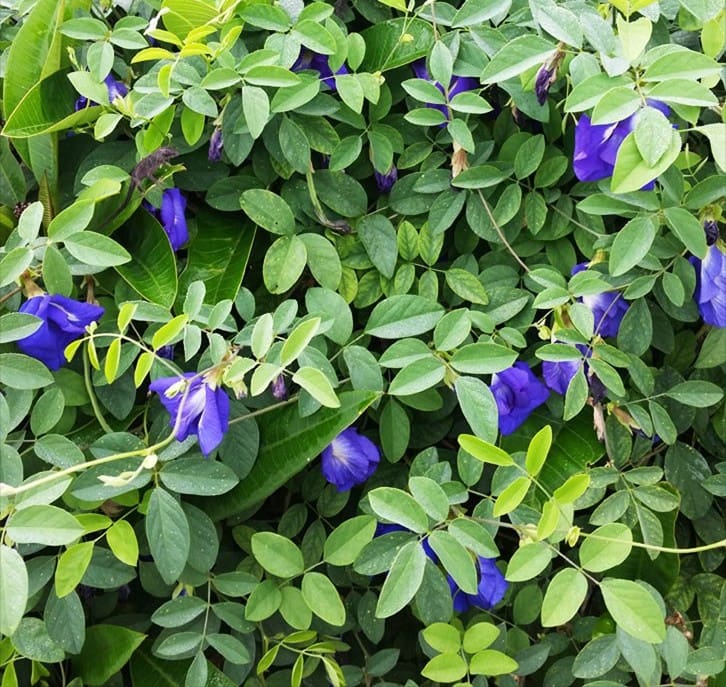
Also called Butterfly Pea vine, this twining vine is a tropical beauty that flaunts vivid indigo blooms shaped like — you guessed, butterflies! Fast-growing and great for trellises or fences, it’s a showstopper that also happens to be edible (hello, blue tea!).
Growing Tips:
-
Loves heat, sun, and well-drained soil. If planting in heavy clay soil, be sure to amend the soil with compost and plant high for better drainage.
-
Water regularly but don’t overdo it — this vine is drought-tolerant once established.
-
Dies back in frost but returns in spring.
Design Tip: Let it scramble over a white trellis or arbor for a bold blue-and-white contrast. Add it near seating areas — it’s a conversation starter.
2. Blue Daze (Evolvulus glomeratus)
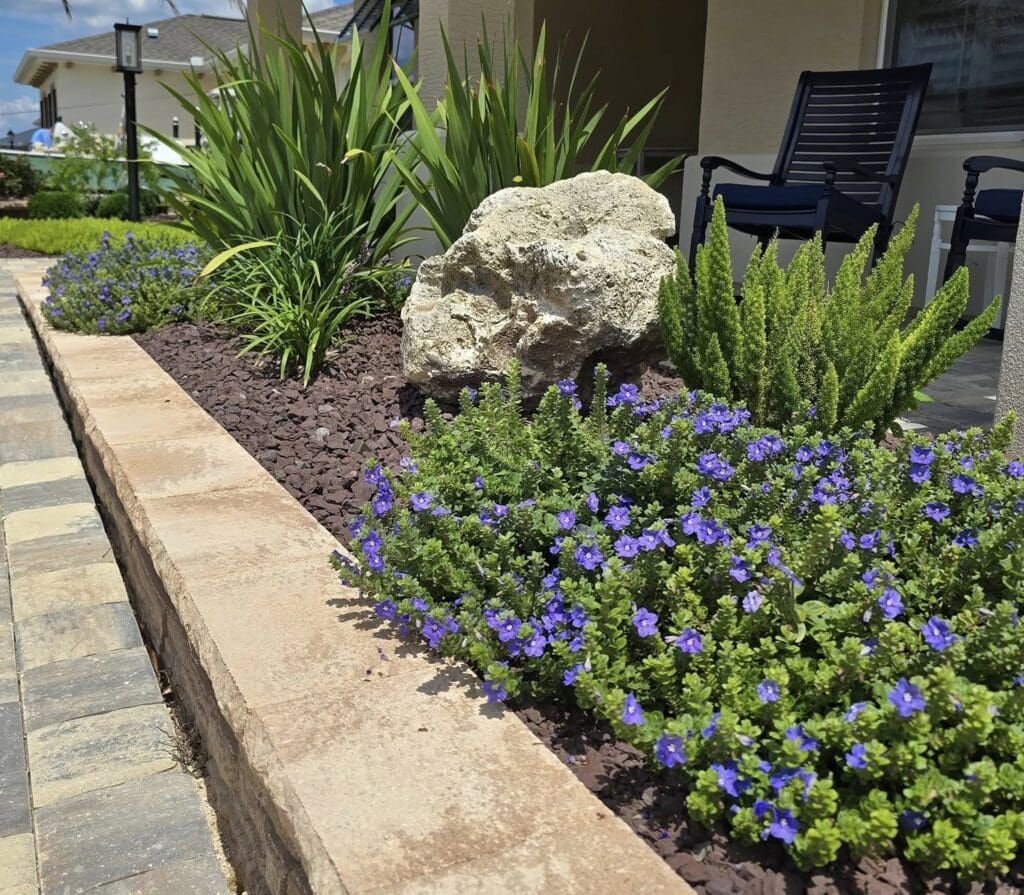
This low-growing groundcover shines in the sun with blue blooms that practically glow against its silvery-green leaves. It’s perfect for spilling over borders, hanging baskets, or softening rock edges.
Growing Tips:
-
Full sun is best — partial shade means fewer flowers.
-
Tolerates heat and poor soil, but hates wet feet. Avoid over-watering.
-
Trim lightly to encourage denser growth.
Design Tip: Plant at the edge of garden beds or containers for a “blue waterfall” effect. Pairs beautifully with golden foliage or terra cotta pots.
3. Blue Plumbago (Plumbago auriculata)
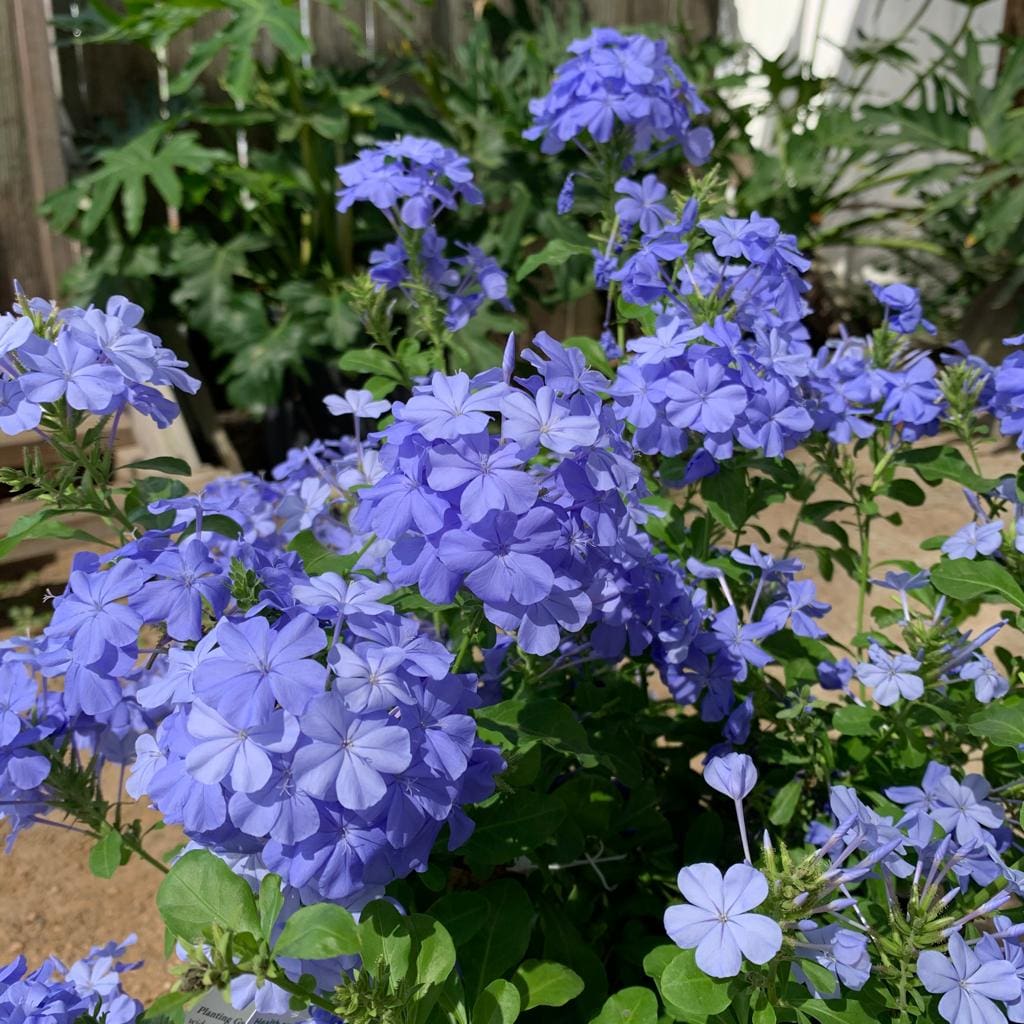
An old Southern favorite, plumbago is a sprawling shrub with clusters of pale blue, almost periwinkle flowers. It’s a butterfly magnet and a long-bloomer from spring through fall. Hydrangeas don’t do well in our area, but Plumbago is a lovely substitute.
Growing Tips:
-
Likes full sun but can tolerate part shade.
-
Regular watering keeps it lush, but it’s tough enough to survive drought.
-
Can get leggy — prune occasionally for neatness while allowing a natural form.
Design Tip: Use as a loose hedge or backdrop plant. Its softness balances spikier plants like salvia. Bonus: It can double as a trailing spiller in large containers!
4. Henry Duelberg Salvia (Salvia farinacea ‘Henry Duelberg’)
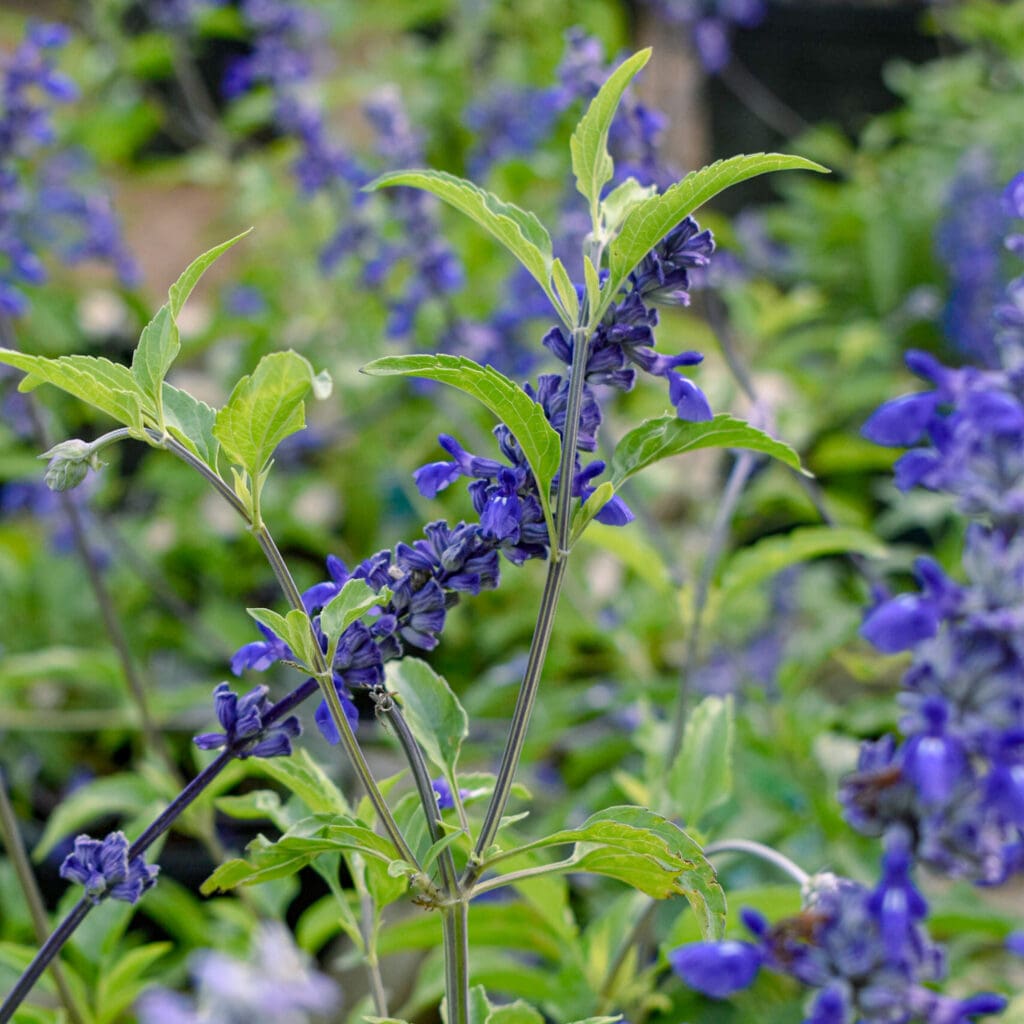
This Texas native brings bold dusty-blue spires and unbeatable drought resistance. It’s also a pollinator buffet, attracting bees, butterflies, and hummingbirds.
Growing Tips:
-
Full sun is best, though it tolerates light shade.
-
Deadhead for more blooms, and cut back mid-summer to refresh.
-
Deer-resistant and super hardy.
Design Tip: Plant in groups for an intense pop of vertical color. Pairs well with yellows, oranges, or soft grasses for contrast.
5. Mystic Spires Salvia (Salvia ‘Mystic Spires Blue’)

The more compact and bushier cousin of Henry Duelberg salvia, this hybrid salvia blooms in rich, deep blue-purple all summer long. Great for borders, containers, and butterfly gardens. This might be the best-performing salvia variety for South Texas. We’ve planted thousands over the years!
Growing Tips:
-
Prefers full sun and moderate watering.
-
Trim back after the first flush of blooms to keep it tidy and reblooming.
-
Fertilize lightly with granular Medina Growin Green once a month, followed by Hasta Gro liquid every 2 weeks for incredible results.
Design Tip: This salvia adds rich color without towering over neighbors. Try it in pots flanking your porch or mixed in sunny perennial beds.
More Design Tips: Making the Blues Sing
-
Think in layers: Use taller salvias or climbing pea vine in the back, medium-height plumbago in the middle, and low-growing blue daze in the front.
-
Play with color combos: Pair your blues with silver foliage (like dusty miller or artemisia) and warm hues (like coral or yellow) for a dynamic palette.
-
Use repetition: Repeat blue plants throughout your space to create rhythm and cohesion.
-
Night garden magic: Blue flowers glow at dusk—perfect for gardens you enjoy in the evening.
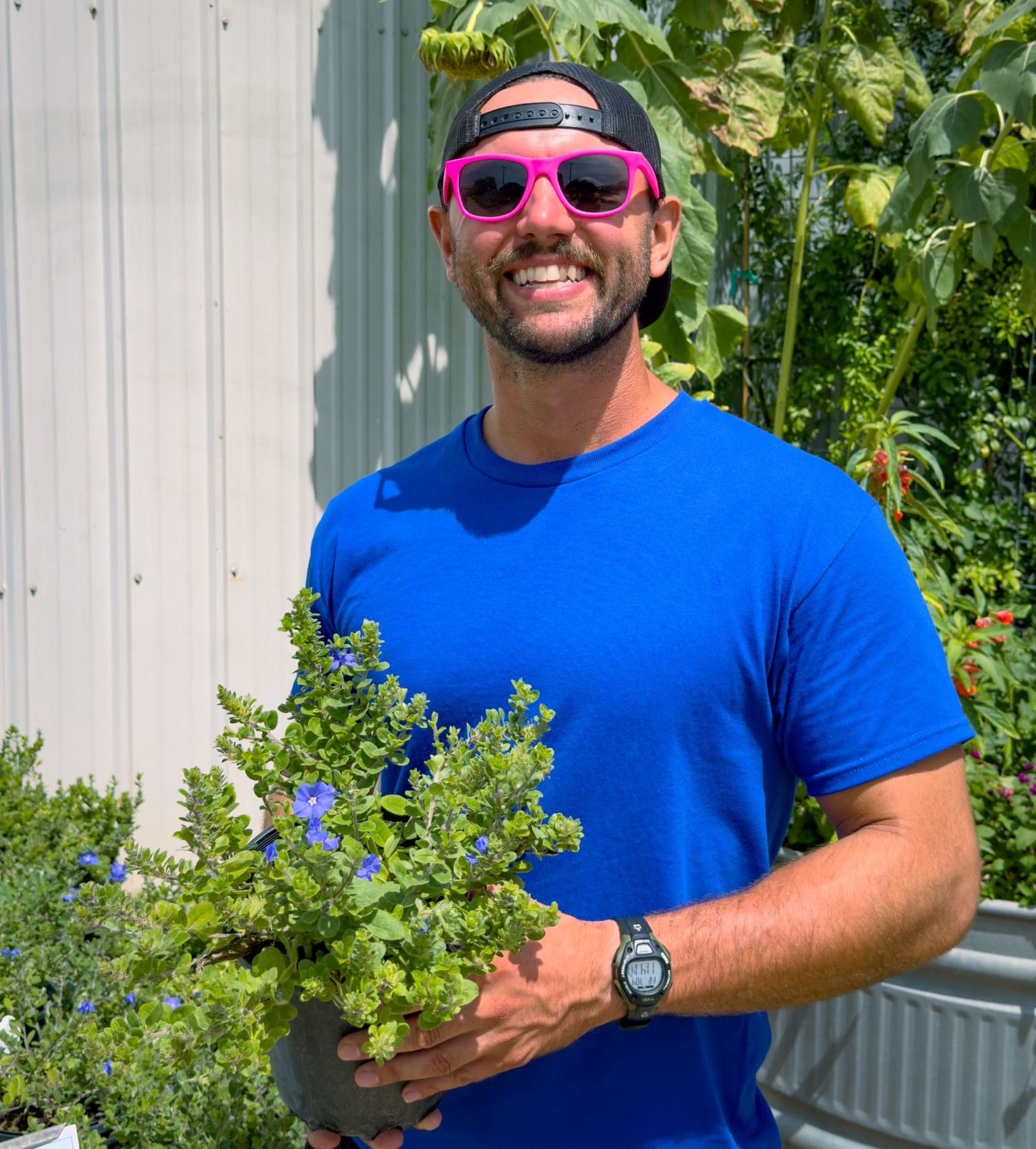


Reader Interactions